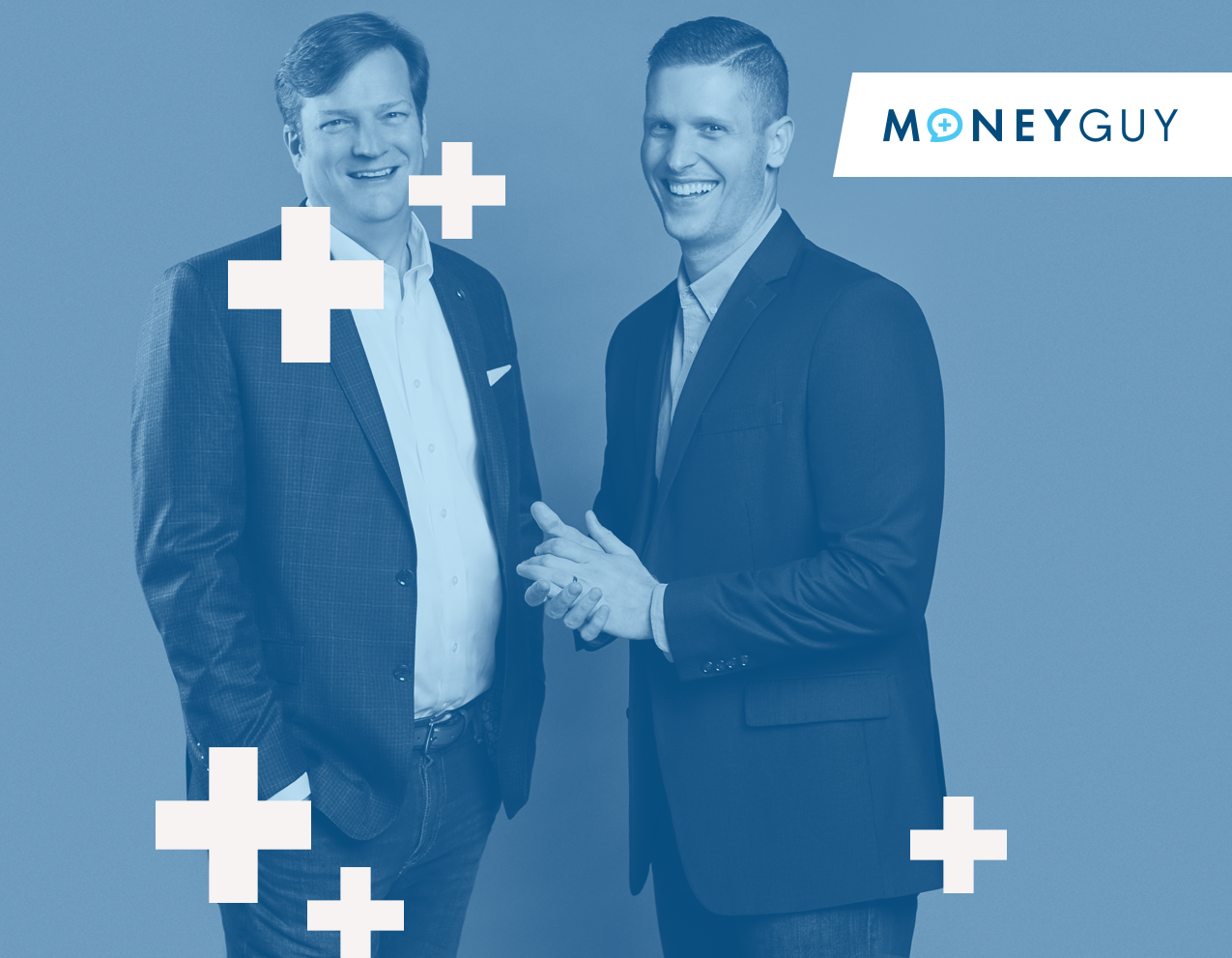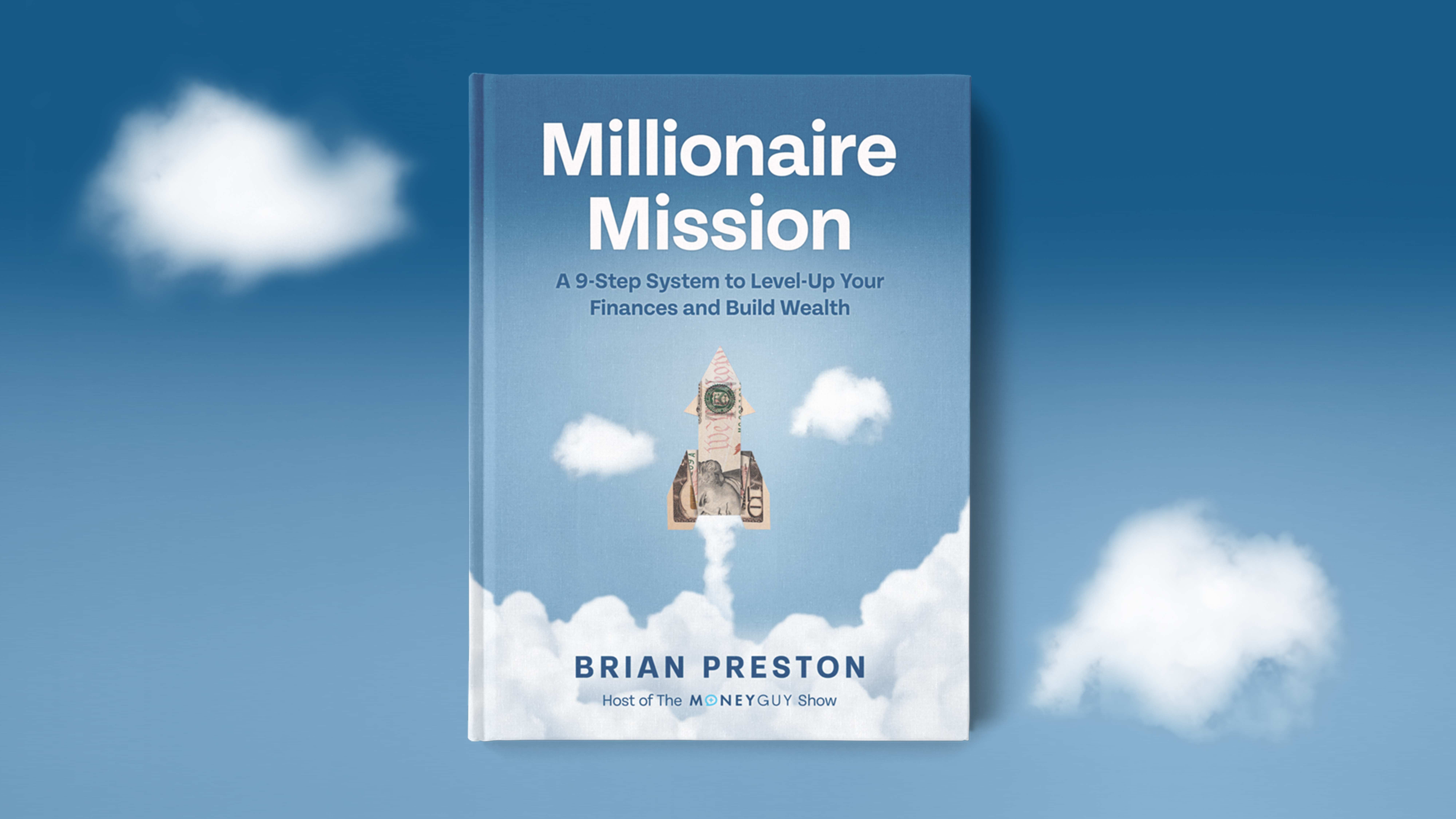
Change your life by
managing your money better.
Subscribe to our free weekly newsletter by entering your email address below.

Subscribe to our free weekly newsletter by entering your email address below.
Hank Green released a video titled, “I’m changing how I manage my money because of AI.” It reached over a million views in a week, and many of you asked us for our thoughts. Well, we do have thoughts—and I’m excited to share them. Let’s dive in.
Hank starts with:
He’s not a financial advisor.
He doesn’t claim to know the best way to invest money.
He’s simply someone who has invested for retirement and paid attention to how things have gone over the past 30 years.
One key takeaway he emphasized:
If you were broadly invested in the stock market over the last 30 years and stayed disciplined, things went well for you.
Of course, past performance is not a guarantee of future returns.
Looking at rolling annualized returns of the S&P 500 from 1970 to now:
Average 40-year annualized return: ~10.9%
Inflation-adjusted return: ~7.5%
That means if you invested in the S&P 500 for 40 years of your working career, you could expect ~10% annually on average.
Related: What Rate of Return Should You Expect?
Hank points out that:
If you spent time buying, selling, or day trading, you likely underperformed the market.
Paying someone else to do the same probably didn’t help either.
The data backs this up:
2024: Stock market had an annual return of 25%, but the average private investor earned just 16.5% (Dalbar).
A University of California study found high turnover portfolios lost ~6.5% annually due to costs and poor timing.
SPIVA data: Nearly 90% of active large-cap funds underperform their benchmark over 15 years.
Related: Active vs. Passive Investing
He explains:
Index fund: Tracks a list of companies (e.g., S&P 500), no stock-picking required.
Low cost: Fees are tiny—often ~$10 per year for every $10,000 invested.
U.S. equity: Gives exposure to the U.S. economy across many sectors.
Expense ratios matter:
Passive index funds: ~0.10%
Active funds: ~0.58% (average)
On $100,000 invested, that’s $120 vs. $580 annually in fees—and 90% of active funds still underperform.
Related: Why Fees Matter More Than You Think
Index funds are weighted by market capitalization:
Example: If Apple makes up 5% of the S&P 500, then 5% of your investment in that fund goes to Apple.
This means the biggest companies (Apple, Microsoft, Nvidia, etc.) take up the largest slices.
Hank points out:
Top 10 companies now make up ~38% of the S&P 500 (with Nvidia alone at ~7%).
This level of concentration means less diversification than many assume.
Most of these companies are heavily tied to AI, which he worries might be a speculative bubble.
Our perspective:
Concentration at the top isn’t unusual historically. Different sectors dominate at different times (railroads, energy, tech).
But yes, right now investors in the S&P 500 do carry more AI-related exposure than they may realize.
This is why true diversification means spreading across:
Small caps
International stocks
Bonds
Related: How to Build a Truly Diversified Portfolio
To address the concentration, Hank is:
Moving 25% of his S&P 500 allocation into other investments:
S&P 500 Value Index Fund (focuses on cheaper stocks with lower P/E ratios).
Mid-cap stocks (smaller, potentially faster-growing companies).
International Index Fund (broad exposure to the world economy).
His reasoning:
High P/E ratios of AI-heavy companies worry him.
Diversifying beyond U.S. large-cap tech feels safer.
High P/E = high expectations for future earnings.
If AI companies don’t deliver the massive profits priced in, valuations could fall.
This mirrors the dot-com bubble, when many companies couldn’t meet expectations.
Still, unlike the dot-com era, today’s tech giants generally have:
Substantial revenue
Cash reserves
Established business models outside of AI
Nothing Hank is doing is inherently unsound. But:
We wonder how he picked the 25% figure—advice-driven, or arbitrary?
For most investors, there’s a simpler solution: Index Target Retirement Funds.
Why we like them:
Ultra-low expense ratios (0.08–0.15%).
Built-in diversification (large cap, small cap, international, bonds).
Automatic rebalancing and adjustments as you approach retirement.
They solve the same concentration risk Hank is worried about—without the need to manually split between multiple funds.
Related: What Are Target Date Funds and Should You Use Them?
Hank raises some valid points about concentration risk in the S&P 500 and the speculative nature of AI valuations. His solution—adding value, mid-cap, and international exposure—is reasonable, but investors can often achieve the same outcome more simply through a target retirement index fund.
If you enjoyed this breakdown, make sure to like, subscribe, and keep building toward your great big beautiful tomorrow.
Subscribe on these platforms or wherever you listen to podcasts! Turn on notifications to keep up with our new content, including:
Hank Green released a video titled “I’m Changing How I Manage My Money Because of AI.” It got about a million views in a week, and many of you have sent it to us asking for our thoughts. Well, we do have thoughts, and I am so excited to share them with you. Let’s dive right in.
He begins by saying:
“I’m not a financial adviser. I do not understand what financial advisers do or what is the best way to invest your money. I am simply a man who has money invested for retirement and has paid attention to how that has gone for people over the last 30 years or so. And one thing that has become obvious is that if you were disciplined over the last 30 years—and of course past performance is no guarantee of future returns—but if you just made sure that you were invested broadly in the stock market, things went well for you.”
I like a lot of what he said there. Past performance does not guarantee future returns. That said, as Hank pointed out, if you were broadly invested in the stock market, things went pretty well for you. We have the data to back this up: if you look at the rolling annualized returns of the S&P 500 from 1970 to now, the average 40-year annualized return sits at around 10.9% (or 7.5% if adjusted for inflation). That means if you invested in the S&P 500 for 40 years of your working career, you could expect around a 10% annualized rate of return on average.
Hank goes on to say that if you spent your time buying, selling, and day trading, you probably underperformed the market and wasted a lot of effort. If you paid someone else to do that for you, it probably didn’t help much either.
This is also true. Take 2024 as an example: it was a record-breaking stock market year with several all-time highs and a total annual return of over 25%. But the average private investor only earned about a 16.5% return, according to Dalbar’s annual report. A University of California study found that high portfolio turnover could reduce returns by as much as 6.5% annually due to trading costs and poor market timing. Actively managed funds don’t fare much better. According to SPIVA, nearly 90% of active large-cap funds underperformed the S&P 500 over a 15-year period.
Hank then explains what he means by investing in a low-cost U.S. equity index fund:
“Index fund means you’re not paying someone to guess which stocks will win. The fund simply follows a list of U.S. companies like the S&P 500 or the entire U.S. stock market. It’s a way to invest in the market itself rather than trying to outsmart it. Low cost means the fund takes very little off the top, often just a few dollars a year for $10,000 of investment. Over decades, even tiny percentage fees compound just like any percentage can compound, and they can quietly eat away thousands or tens of thousands of dollars from your future. And U.S. equity means the fund tracks American companies from tech giants to banks, manufacturers, and retailers, giving you a slice of the whole U.S. economy in one investment.”
This is all correct. The average expense ratio of a passively managed index fund is about 0.1%, according to Investopedia. Actively managed funds, on the other hand, typically have expense ratios between 0.5% and 0.75%. On a $100,000 investment, that’s $120 in annual fees for an index fund versus $580 for an actively managed fund—while 90% of them underperform. Over time, those fees compound and can eat away a significant portion of your wealth.
Hank also notes that index funds are market-cap weighted. That means the bigger a company is, the larger its slice of your investment. For example, if Apple represents 5% of the S&P 500, then 5% of your investment in an S&P 500 index fund goes into Apple.
This weighting leads to Hank’s concern: the top 10 companies in the S&P 500 now make up about 38% of the index, with Nvidia alone representing around 7–8%. Since many of these companies are heavily invested in AI, Hank worries that the S&P 500 is less diversified than it appears.
He’s not alone. We hear this concern from clients often. While it’s true that concentration in the S&P is high right now, this isn’t unusual historically. Different sectors have dominated in different eras—railroads, energy, telecommunications, and now technology. Market concentration tends to happen during periods of innovation as capital flows to growth opportunities. Still, concentration does increase risk, which is why true diversification means going beyond just the S&P 500. A well-built portfolio should include small caps, international stocks, and bonds that move differently than large U.S. tech companies. (Learn more about diversification here.)
Hank decided to address this by reallocating 25% of his S&P 500 investment into:
An S&P 500 value index fund (excluding higher-priced growth stocks with high P/E ratios).
Mid-cap stocks.
An international index fund.
Essentially, he wants more diversification because the top companies in the S&P 500 take up too much of his portfolio and trade at very high valuations. High price-to-earnings ratios can be risky because they rely on companies delivering massive future growth. If AI companies don’t deliver the earnings investors expect, valuations could fall—much like what happened during the dot-com crash.
The rest of his diversification is more straightforward: small caps offer higher growth potential but higher risk, while international stocks broaden exposure beyond the U.S. economy.
We’re not weighing in on whether Hank’s decisions are right or wrong, but we do think it’s worth asking: why 25%? Was that number based on professional advice, or did he just pick it?
For many investors, there’s actually a simpler way to achieve everything Hank wants: index target retirement funds. These funds automatically include U.S. large cap, small cap, international, and bonds in a single low-cost investment. They also rebalance automatically and shift toward more conservative holdings as you approach retirement. Expense ratios are typically very low (around 0.08%–0.15%).
In other words, target date funds deliver the diversification Hank is creating manually, but in one simple investment that evolves appropriately over time.
Hank, it was a very interesting video and we loved a lot of what you said. And if you all liked our breakdown, make sure you like, subscribe, and keep building toward your great big beautiful tomorrow.


Financial Order of Operations®: Maximize Your Army of Dollar Bills!
Here are the 9 steps you’ve been waiting for Building wealth is simple when you know what to do and…
View Resource
How Much Should You Save?
How much of your income can you replace in retirement? You can replace different portions of your income in retirement…
View Resource


How about more sense and more money?
Check for blindspots and shift into the financial fast-lane. Join a community of like minded Financial Mutants as we accelerate our wealth building process and have fun while doing it.




It's like finding some change in the couch cushions.
Watch or listen every week to learn and apply financial strategies to grow your wealth and live your best life.
Subscribe to our free weekly newsletter by entering your email address below.